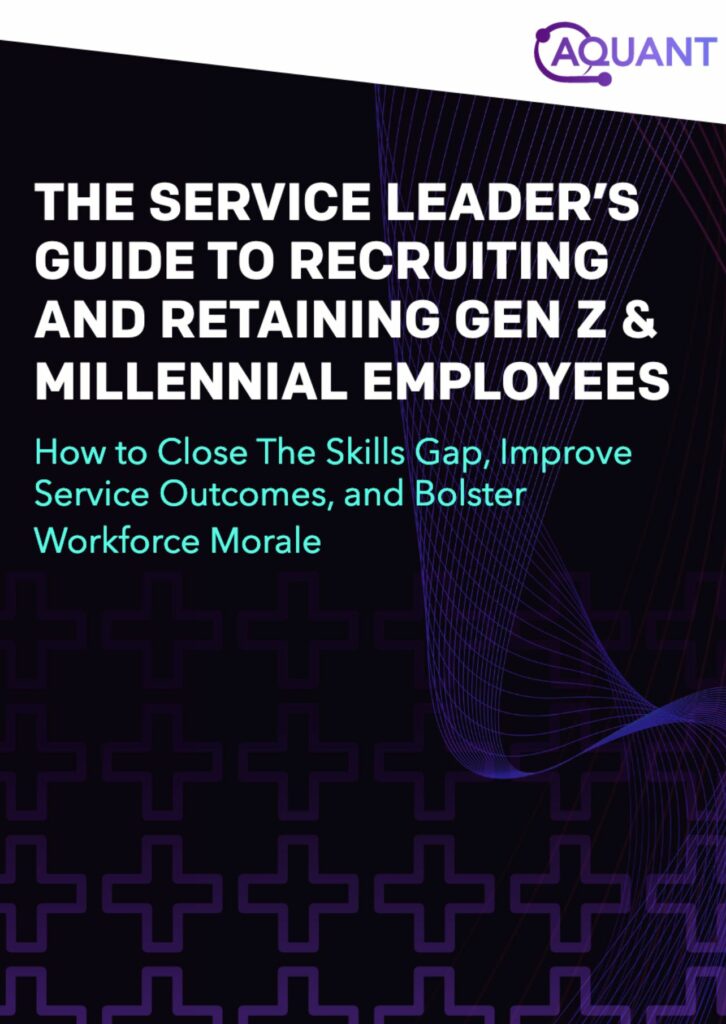The Ongoing Generational Shift in the Service Workforce
In the first article of a series of excerpts from a recent white paper published by Aquant, we look at the disruption and the challenges presented by he ongoing generational shift for service organizations of all sizes…
How to Close The Skills Gap, Improve Service Outcomes, and Bolster Workforce Morale
Your most seasoned service techs are retiring. Do you have a plan to replace them? And how do you know how to transfer years of experience to junior staff quickly?
Today’s service workforce is undergoing a dramatic generational shift. As Baby Boomers move into retirement and take their hard-earned expertise with them, a wave of younger workers are entering the service industry with a sizable learning curve. The disruption presents ongoing challenges for service organizations of all sizes.
In the midst of this shift, service leaders are also juggling:
- A growing skills gap that impacts service cost and quality
- An imbalance in workloads between service veterans and less-tenured staff
- Employee dissatisfaction and/or high turnover
How can organizations like yours attract, retain, and quickly bring up-to-speed younger workers before your seasoned pros retire? The solutions to these challenges, according to industry experts and leading service leaders, include:
- Leveraging the latest digital technologies that empower less experienced employees to succeed by democratizing knowledge
- Promoting continuous learning and development on your service teams
- Setting your people up for success in a post-pandemic world filled with uncertainty and accelerating change
An Ongoing Generational Shift
The service workforce, for organizations of all sizes and industries, is undergoing a rapid transformation. A large percentage of Baby Boomers (born from 1946 to 1964) have either retired or are transitioning into retirement.
Meanwhile, younger Millennials (aged between 24 and 40) and Gen Z (the newest cohort in today’s workforce, aged 24 and younger) will soon account for the majority of the workforce, according to research from global consultancy PWC.
The impact: the industry is managing a workforce in flux, balancing the demands of attracting the tech-savvy and collaborative younger demographic, while grappling with a service skills gap for the incoming recruits.
What’s at the heart of the skills gap? As Baby Boomers take their institutional knowledge into retirement, the new recruits (Millennials and Gen Z) don’t have the years of experience and practical, on-the-job know-how needed for success in the field. In addition, as the world moves to more complex machinery and advanced technologies, a highly skilled workforce is more important than ever for success.
Look out for the next feature from the white paper “The Service Leader’s Guide to Recruiting and Retaining Gen Z & Millennials Employees” next week where we look at two major service challenges to overcome when it comes to the service workforce.
Want to read more? Download the full his white paper now, available exclusively to all FSN PRO members and you can access it instantly.

![]() Data usage note: By accessing this content you consent to the contact details submitted when you registered as a subscriber to fieldservicenews.com to be shared with the listed sponsor of this premium content Aquant who may contact you for legitimate business reasons to discuss the content of this white paper.
Data usage note: By accessing this content you consent to the contact details submitted when you registered as a subscriber to fieldservicenews.com to be shared with the listed sponsor of this premium content Aquant who may contact you for legitimate business reasons to discuss the content of this white paper.


